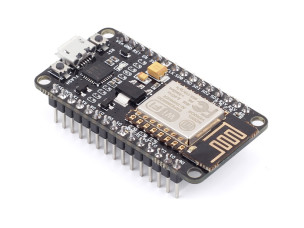A Short History of Rapid Prototyping Platforms
Raspberry Pi
The initial goal of the Raspberry Pi project was to create a low-cost educational platform for teaching and learning programming in the Third World while focussing on Python (hence the Pi). When people discovered that the cheap Linux board also made a great media server, demand ‘escalated totally out of hand’ and the rest is history. Several million Pi’s in various flavours have been sold since, although few made it to the Third World, and all sorts of similar boards were born. The only thing that remained from the original idea was Python.
Large production quantities allow for a low end-product price, which is proven by for instance the Raspberry Pi 3 Model B that currently retails for less than €40. A side effect of the RPi’s low price was that people started to expect other boards to be incredibly cheap too, leading to the early death of many promising and potentially better projects. As so often, it is not always the fittest that survives.
Anyway, like it or not, the Raspberry Pi is here to stay and is a safe bet for applications that require hardware interfacing to simple devices and lots of computing power. It is an excellent platform for (Linux) programmers that need to control a motor or read a switch.
NodeMCU, ESP8266 and ESP32
As with life on Earth, nobody really knows where the NodeMCU board came from. Alien intervention? Chinese? Russians maybe? Whatever. What we do know is that the project appeared out of the blue on GitHub at October 13, 2014. It quickly gathered up a following and two years later the board is available for a few euros everywhere on the Internet.
NodeMCU is a small board housing an intelligent Wi-Fi module and some additional circuitry to simplify uploading programs and scripts to it. The Wi-Fi module is based on the ESP8266 chip from Espressif Systems which integrates a 32-bit microcontroller with a full TCP/IP/Wi-Fi stack. Flash memory for storing programs and data is available too. The success of the chip is not only due to its low price, but also to the software development kit (SDK) that was made available by its manufacturer and that was rapidly ported to many development platforms, including Arduino. Another big help came from the Shenzhen-based company AI Thinker that created break-out boards for it. The board can be programmed in Lua, MicroPython, C/C++ and BASIC and the many libraries for popular DIY modules and parts available online make the board an excellent choice for connected applications.
The successor of the ESP8266, the ESP32, adds dual-mode Bluetooth to the mix and will probably have a future at least as bright as its elder brother.
Read full article
Hide full article



Discussion (0 comments)